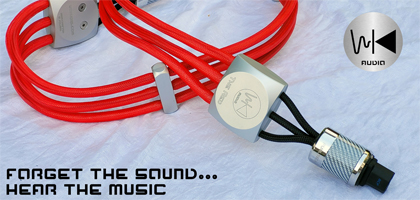No. 239 April 2024
- COVER REVIEW: Muarah MT-3 & MY-1/9 ⸜ turntable & tonearm » POLAND
- KRAKOW SONIC SOCIETY ⸜ meeting № 145: POLSKIE NAGRANIA (Polish Recordings label) on SACD, with Damian Lipiński onboard » POLAND/Kraków
- REVIEW: Carbide Audio CARBIDE BASE ⸜ anti-vibration feet » USA
- REVIEW: Fezz Audio EQUINOX EVO ⸜ digital-to-analog converter » POLAND
- REVIEW: Marton OPUSCULUM OMNI V1.0 ⸜ integrated amplifier » POLAND
- REVIEW: Norma Audio Electronics REVO IPA-80 ⸜ integrated amplifier » ITALY
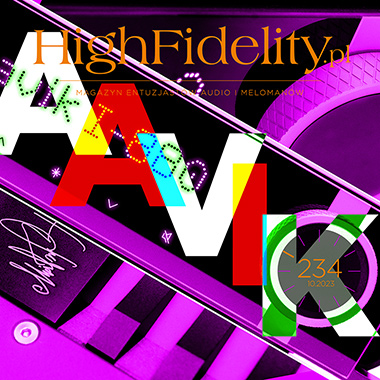
|
Editorial
text WOJCIECH PACUŁA |
 |
No 234 November 1, 2023 |
|
CZESŁAW NIEMEN on SACDs
▌ What a beautiful disaster - or files take the whole pot INITIALLY EVERYTHING LOOKED promising, and both "camps" released many titles on hi-res media and also offered compatible devices. DVD-A discs were played on DVD-A players, also used for watching movies from DVD, and this was an offer for movie buffs, mistakenly associated with audiophiles at the time, or on DVD-A/SACD universal players, which many important audio brands had in their portfolios. It looked similarly for SACD - Sony, Philips and - owned at the time by that Dutch manufacturer - Marantz offered excellent SACD, stereo and multi-channel players. Alongside them grew a whole sector of manufacturers with their own SACD players. 
⸜ One company that consistently offers SACD players is Japan's Accuphase; it is a photo the two-box DP-1000/DC-1000 player • test HERE Yet around 2007 - that's how commentators point it out, and that's the date Wikipedia also adopted - the project that could be called "Hi-Res discs" was virtually dead. By 2003, when the best SACD sales were recorded, 1.3 million units had been purchased. While this seems like a lot, one has to look at the big picture: in 2003 alone, 800 million discs (of all formats) were sold, of which CD accounted for 93% and SACD and DVD-A collectively only 0.002%. Even weaker sales results were recorded by the DVD-A format alone. It disappeared from the market, and today it is somewhat kept alive by Pure Audio Blu-ray discs (more → HERE and HERE). As Steve Knopper wrote in his book Appetite for Destruction, subtitled The Spectacular Crash of the Records Industry In the Digital Age, everyone was defeated by one man, a then-unknown Shawn Fanning, a nineteen-year-old Metallica fan who wrote a program in his dorm room that revolutionized the audio industry and simultaneously led to the demise of physical media (p. 115). The title dedicated to it reads eloquently enough: A Nineteen-Year-Old Takes Down The Industry - with the Help of Tiny Music, and Few Questionable Big Music Decisions. According to Knopper, Napster, a program for sharing mp3 audio files directly between computers, was first ignored by the industry, then attacked, then destroyed. The process consumed a lot of money, cost a lot of effort, and yet it did not stop the rising tide on which the culture of file-based music listening surfaced, and did not stop the erosion of CD sales. Specialized in high-end equipment, the audio industry for a very long time ignored what was happening on the Web. The Compact Disc was the most important medium for music. The important thing is that slowly the LP began to resurface, thanks mainly to DJs, but also to changes in the culture, which absorbed this artifact as part of a larger "program" that can be called "vintage" (possibly "recycling"). Specialized audio magazines have also played their part in renewing confidence in the black disc. The reason we ignored what was out there was because lossy files were unacceptable to us, both in terms of sound and concept. For many years the "analog" camp argued that the CD was a terrible idea, after which the "digital" camp in our industry had to deal with something that was really much worse than that medium. The perception of files in audiophile circles began to change when the first high-resolution files appeared. Pro Tools, the most popular DAW, which launched in 1991, had a 24-bit system ready in 1997, and it wasn't until 2002 that a Pro Tools | HD version with a sampling rate of 96 or 192 kHz was on the market. This made it possible to record, mix and master files of this type and then sell them over the Internet. Publishers, afflicted by Napster and piracy, were unconvinced by the idea for a long time, and then Steve Jobs came on the scene with the iPod and iTunes (2003), which was joined in 2015 by the Apple Music store, which once again led to a revolution in the entire music industry, not just audio. Since then, file buying, and later streaming, have dominated the entire music market. 
⸜ Hi-res files, both PCM and DSD, are a viable alternative to physical media; pictured is the XACT S1 file player • test HERE The companies we've already mentioned also came forward to claim their piece of the pie. At the CES 2014 show in Las Vegas, Sony launched a new project to introduce common standards for the entire market and simplify communication with customers. It was all about Hi-Res, i.e. the criteria that audio devices designed for high-resolution signal reproduction must meet. Tags of this type quickly became a standard and "mandatory" marking for many products, and Sony was joined by companies such as Bowers & Wilkins, Onkyo, Samsung and LG, and then others (more → HERE). As Marc Finer, director of the Digital Entertainment Group, said at the time, this allowed plans to "crystallize" for the development of this part of the audio market (more → HERE). This was yet another event concerning not only the slice we talk about "perfectionist audio" and "audiophilism", but the entire music-related market. At the same time, however, it was, at least as I see it, Sony's definitive farewell to the Super Audio CD format. ▌ SACD in 2023 – but why? HOW DID IT HAPPEN that in the second half of 2023, sixteen years after the - alleged - departure from the scene of SACD, five Super Audio CDs of rock music, prepared specifically for this format, were released? And they contain Polish music?! This is a really interesting question. As recently as five-six years ago, when I talked to the big audio manufacturers, they thought that physical disc players were a thing of the past, and that the SACD format didn't exist at all. As it turns out - they were wrong. Not only has SACD survived, but it is slowly but steadily taking up more and more space in the world of perfectionist audio. |
To be clear: as a popular format, it doesn't stand a chance. For audiophiles, however, it can be an excellent alternative to streaming hi-res files. 
⸜ The first five titles released by Warner Music Poland on SACD • photo. press mat. Warner Music Poland (I will talk to you about them at AVS 2023) Polish publishers release SACDs from time to time, but only with classical music - the Dux label has them in its catalog, BeArTon also has them, and soon Prelude Classic (recordings of Telemann's music, which will include an entry by the writer of these words on the recording technique - coming soon), and Polskie Radio has also released several discs of this type. In fact, the SACD tradition has been sustained mainly by Japanese releases, offering mostly classical and jazz, but adding fusion and rock every now and then. In Poland, however, the format has never gained acceptance among the major publishing houses, and rock music - or more broadly: pop music - has never even been considered. So let me repeat: what happened that just now the Polish branch of a major publisher, Warner Music Poland, decides to release its flagship titles - it's already clear that there will be other performers after Niemen - in a format that was declared dead years ago? In time we will probably learn more details, but here and now I would like to formulate a few hypotheses. One is related to the "spirit of the times". It is impossible to pass over the fact that in the American audio space the most important labels offering reissues are Mobile Fidelity and Analogue Productions. While they can't match the sales volume of the "majors," when it comes to market impact and so-called clout they are unrivaled. Perhaps over time, their importance has increased enough that they have begun to be seen as an important part of the puzzle. This is probably why Craft Records, a brand owned by the Concord group, is releasing reissues on SACD. And others, seeing the success of the project and wanting to maintain sales revenue - and physical formats are irreplaceable in this - are jealously looking at this seemingly insignificant slice of the market. It's also worth noting that something that could be called "diffusion" may also have been at work, which would be that Japanese affiliates have been offering such discs for years, and the news also spreads through headquarters in the US and Europe with access to sales information. I tie the second lead directly to the Polish market. It's not a big market and everyone knows everyone, or at least has heard of them. I know this third-hand, but I know that the directors of the Polish branches of the largest music corporations know the audiophile press and are read it - among them - "High Fidelity". If so, would it be difficult to imagine that the demands we raised - few, but still - for Polish music on SACD, the reviews of many Japanese discs, including in "High Fidelity", etc., that it all grew to the point where it was hard not to notice? 
⸜ What draws attention in the new versions is the refined content and obi • photo. press mat. Warner Music Poland And then there is the technical element. For what’s interesting is the choice of the sound engineer who has remastered all the new titles for Warner. Damian Lipinski, for he is the one in question, has been working for years with a DAW system that allows mastering in DXD (Digital eXtreme Definition) quality, that is, up to 32 bits and 352.8 kHz. And for years, in e-mails with me, he has expressed the hope that one day he would be able to persuade someone to release his remasters in the best possible form. And DXD is, let me remind you, the trade name for a fixed-parameter PCM signal for recording, mixing and mastering signals for SACD discs. I think these are the three most important reasons why, in the third decade of the 21st century, at a time when files are the "daily bread" of billions of people, we get recordings in what I believe is the best digital format ever created. In addition to the fantastic format, there is also the manner of release. And here again, what I wrote earlier is repeated: the publisher has taken seriously what we - also in "High Fidelity" - write about the needs of the audiophile-collector. For the disc is accompanied by an extensive essay, as well as never-published photos from the session and photos of the session recording cards. And one more thing - OBI, which explicitly links to the Japanese thread. This isn't the first time Polskie Nagrania has used this format for visual identification and information - it's worth remembering the vinyls from the "Black Pearls" series (more about all editions of the Dziwny jest ten świat album in my article 75 LAT | 10 LAT, "High Fidelity" 2014, No. 121, more → HERE). But this is the first time a major publisher has applied it to digital discs. Why hasn't anyone done this before? My understanding of this situation is that never before did these three elements, which I would call necessary conditions, come together. Surely there were other conditions that we don't know about, but they must have been optional. And yet, contrary to appearances, all this is very simple. You don't need to analyze thousands of data to see certain regularities and trends. In addition, when you have in your hand, as Warner has, a personality that has become a "brand," it is difficult to make a mistake. Jacek Dukaj writes in his analysis of artificial intelligence::
This is why reissuing, over and over again, the same albums and appealing to the same longings in us for what we already know, will also be present in the future, and perhaps even more often than now. For us, people who demand fullness from a recorded musical work, and for that the best possible sound during playback is essential, we should rejoice. This means that we will get better and better remasters - such as these, prepared by Damian. I've known them for a while, the mastering engineer asked me some questions a few times while working on this material - but just to be clear, the idea and execution are 100% his - and I have to say that I haven't heard so good Niemen releases yet, even though the previous remaster, by Jacek Gawlowski, was excellent. That's why I'm happy about what's happening. I'm happy about the presence of SACD discs and the fact that we will get the best of Polish popular music on them. We live in interesting times. ● WOJCIECH PACUŁA |
About Us |
We cooperate |
Patrons |
|
Our reviewers regularly contribute to “Enjoy the Music.com”, “Positive-Feedback.com”, “HiFiStatement.net” and “Hi-Fi Choice & Home Cinema. Edycja Polska” . "High Fidelity" is a monthly magazine dedicated to high quality sound. It has been published since May 1st, 2004. Up until October 2008, the magazine was called "High Fidelity OnLine", but since November 2008 it has been registered under the new title. "High Fidelity" is an online magazine, i.e. it is only published on the web. For the last few years it has been published both in Polish and in English. Thanks to our English section, the magazine has now a worldwide reach - statistics show that we have readers from almost every country in the world. Once a year, we prepare a printed edition of one of reviews published online. This unique, limited collector's edition is given to the visitors of the Audio Show in Warsaw, Poland, held in November of each year. For years, "High Fidelity" has been cooperating with other audio magazines, including “Enjoy the Music.com” and “Positive-Feedback.com” in the U.S. and “HiFiStatement.net” in Germany. Our reviews have also been published by “6moons.com”. You can contact any of our contributors by clicking his email address on our CONTACT page. |




 |
     |
main page | archive | contact | kts
© 2009 HighFidelity, design by PikselStudio,
projektowanie stron www: Indecity



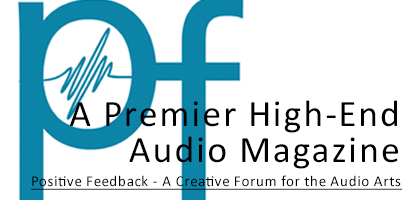
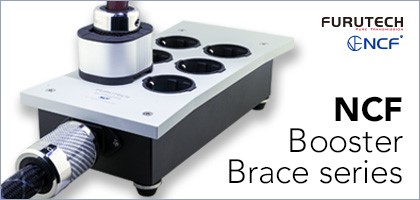
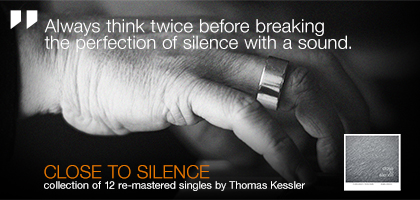
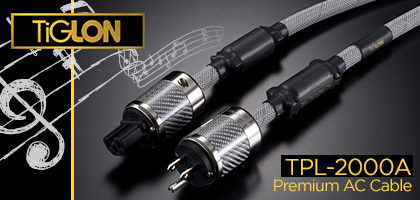
 HE YEAR 1999 WAS A SPECIAL YEAR FOR THE AUDIO INDUSTRY. In March, a new project of companies centered around the DVD format - DVD-Audio (DVD-A) - was announced with pomp, and at the end of it, the Philips-Sony duo entered the market with their own idea for a disc to be the successor to the Compact Disc format and - in their plans - a source of revenue from licensing agreements for years to come, namely Super Audio CD (SACD). Big money, rich corporations, major labels - and nothing came of it.
HE YEAR 1999 WAS A SPECIAL YEAR FOR THE AUDIO INDUSTRY. In March, a new project of companies centered around the DVD format - DVD-Audio (DVD-A) - was announced with pomp, and at the end of it, the Philips-Sony duo entered the market with their own idea for a disc to be the successor to the Compact Disc format and - in their plans - a source of revenue from licensing agreements for years to come, namely Super Audio CD (SACD). Big money, rich corporations, major labels - and nothing came of it. A personal, individual creator is (was) needed to promote his brand. The brand is positioned by the theme of the creation, its style, the biography and personality of the creator, his native culture, his media presentation. Since such a pattern was created - it will exist for all time, regardless of the vitality and activity of the brand creator.
A personal, individual creator is (was) needed to promote his brand. The brand is positioned by the theme of the creation, its style, the biography and personality of the creator, his native culture, his media presentation. Since such a pattern was created - it will exist for all time, regardless of the vitality and activity of the brand creator.
